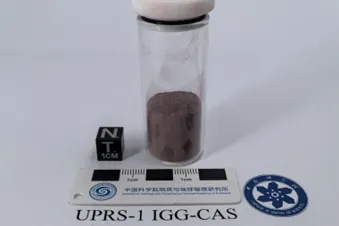
Unlocking the Future of Vision: How Ellipsoid Zone Thickness Predicts Visual Loss
2025-05-14
Author: Mei
A Game-Changing Discovery in Eye Health
In groundbreaking findings presented at the Association for Research in Vision and Ophthalmology 2025 meeting, researchers revealed that the thickness of the ellipsoidal zone-retinal pigment epithelial (EZ-RPE) central subfield could be a critical indicator of future visual deterioration. This study, emerging from the GATHER1 and GATHER2 clinical trials, offers new hope for early intervention in patients at risk of severe eyesight loss.
The Research Behind the Revelations
Dr. Reem Amine and her team from the Tony and Leona Campane Center for Excellence in Image-Guided Surgery at the Cole Eye Institute, Cleveland, conducted this vital analysis, building on previous research that connected the integrity of the ellipsoid zone with retinal health and visual function. Their hypothesis suggested that monitoring the EZ-RPE CST provides valuable insights into the progression of geographic atrophy (GA) and associated visual outcomes.
Key Findings that Could Change Lives
Their research showed a stark correlation between baseline EZ-RPE CST and visual acuity among GA patients. Eyes with a CST exceeding 20 microns boasted an average best-corrected visual acuity (BCVA) of 75.1 letters, compared to 69.7 letters in those with CST less than 20 microns and just 67.5 letters in eyes with no measurable CST.
Notably, those with the thickest CST maintained stable vision over time, while eyes with mid-range values witnessed gradual declines. Conversely, individuals with zero microns of CST faced significant visual loss.
Why This Matters for Patients and Clinicians
The implications of this research are significant: identifying patients with thinner EZ-RPE CSTs at the outset could allow for timely interventions to preserve vision. The study suggests that initial measurements of the EZ-RPE CST can flag those at a higher risk for losing their eyesight.
Next Steps: Linking EZ Measures to Clinical Outcomes
Dr. Amine and her colleagues are already looking ahead, aiming to connect EZ measurements to other visual functions, such as low-luminance BCVA. This could transform how clinical trials are designed, potentially leading to more tailored treatments for patients suffering from GA.
A New Era in Eye Care Awaits
With these revelations, the future holds promise for better monitoring and management of patients at risk of visual loss. As the medical community advances, the hope remains that via early detection and intervention strategies, they can safeguard the vision of countless individuals affected by GA.

 Brasil (PT)
Brasil (PT)
 Canada (EN)
Canada (EN)
 Chile (ES)
Chile (ES)
 Česko (CS)
Česko (CS)
 대한민국 (KO)
대한민국 (KO)
 España (ES)
España (ES)
 France (FR)
France (FR)
 Hong Kong (EN)
Hong Kong (EN)
 Italia (IT)
Italia (IT)
 日本 (JA)
日本 (JA)
 Magyarország (HU)
Magyarország (HU)
 Norge (NO)
Norge (NO)
 Polska (PL)
Polska (PL)
 Schweiz (DE)
Schweiz (DE)
 Singapore (EN)
Singapore (EN)
 Sverige (SV)
Sverige (SV)
 Suomi (FI)
Suomi (FI)
 Türkiye (TR)
Türkiye (TR)
 الإمارات العربية المتحدة (AR)
الإمارات العربية المتحدة (AR)